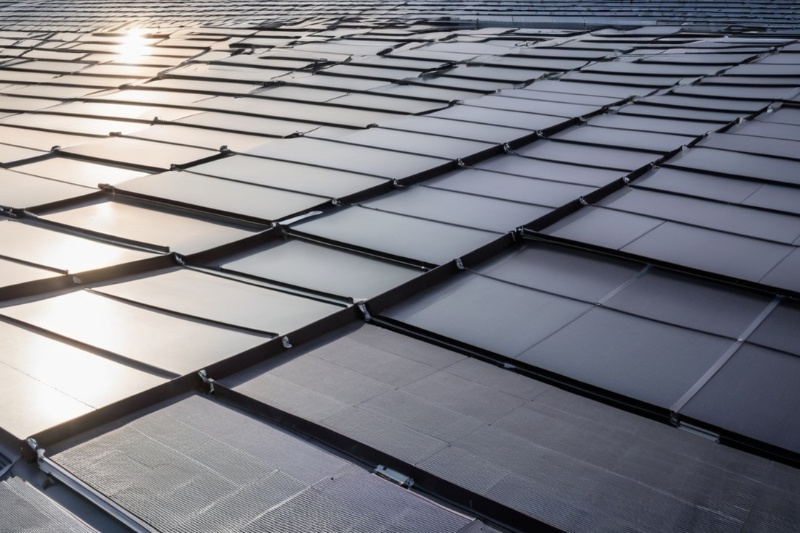The sun's energy offers a clean and sustainable alternative to traditional power sources. When it comes to harnessing this power, homeowners have two primary options: traditional solar panels and Building-Integrated Photovoltaics (BIPV). While both generate electricity, BIPV solar panels offer a unique approach that blends solar technology with building materials. This blog post will delve into the key differences between BIPV and traditional solar panels, helping you decide which option best suits your needs.
Traditional Solar Panels: A Familiar Choice
Traditional solar panels are the most widely recognized solar technology. These panels are typically mounted on a rooftop racking system, separate from the existing roof structure. Here's a breakdown of their key characteristics:
Functionality: Traditional solar panels excel at converting sunlight into electricity. They are highly efficient and come in various sizes and capacities to meet diverse energy demands.
Installation: The installation process for traditional panels is generally straightforward. However, it requires additional roof penetration for mounting, which may raise aesthetic concerns for some homeowners.
Cost: Traditional solar panels are a relatively cost-effective option, with the upfront cost being the primary investment. Government incentives and rebates can further reduce the initial investment.
Aesthetics: Traditional panels can be visually bulky and may not seamlessly integrate with all architectural styles.

BIPV: A Marriage of Function and Form
Building-Integrated Photovoltaics (BIPV) takes solar technology a step further by incorporating solar cells directly into building materials. This creates a unique aesthetic and offers several advantages:
Functionality & Aesthetics: BIPV systems can serve a dual purpose. They generate clean energy while also functioning as roofing materials (bipv roofing products), wall cladding, or even windows. This allows for a more aesthetically pleasing integration of solar power into your home's design. BIPV roofing, for instance, can replace your conventional roof shingles entirely.
Durability: BIPV materials are often designed to withstand harsh weather conditions, potentially enhancing the overall durability of your roof or facade.
Energy Efficiency: BIPV systems can contribute to improved building insulation, leading to reduced heating and cooling costs.
However, BIPV also comes with some drawbacks:
Cost: BIPV price is generally higher than traditional solar panels due to the added complexity of design and materials.
Efficiency: Currently, BIPV materials may be slightly less efficient at converting sunlight into electricity compared to traditional panels.
Limited Options: The variety of BIPV materials and styles may be more limited compared to traditional solar panels.
BIPV mounting: Because BIPV integrates directly into your roof or facade, the "mounting" process is inherently different from traditional solar panels. Installation typically requires specialized training and expertise to ensure a watertight and structurally sound integration.
Choosing the Right Option for You:
The decision between BIPV and traditional solar panels depends on your priorities:
Focus on Efficiency and Cost-Effectiveness: If maximizing energy production and minimizing upfront costs are your primary concerns, traditional solar panels may be the better choice.
Prioritize Aesthetics and Design Integration: If you value a seamless and aesthetically pleasing solar solution, BIPV offers a unique advantage.
Conclusion:
Both BIPV solar panels and traditional solar panels offer valuable options for harnessing the power of the sun. By understanding their key differences, you can make an informed decision that aligns with your budget, priorities, and overall vision for your home.
Do you have any questions about BIPV solar panels, bipv roofing products, or bipv price? Leave a comment below and we'll be happy to help!
Additionally, if you're interested in exploring specific BIPV materials, such as solar shingles or solar windows, let us know in the comments, and we can delve deeper into those options in a future blog post!

